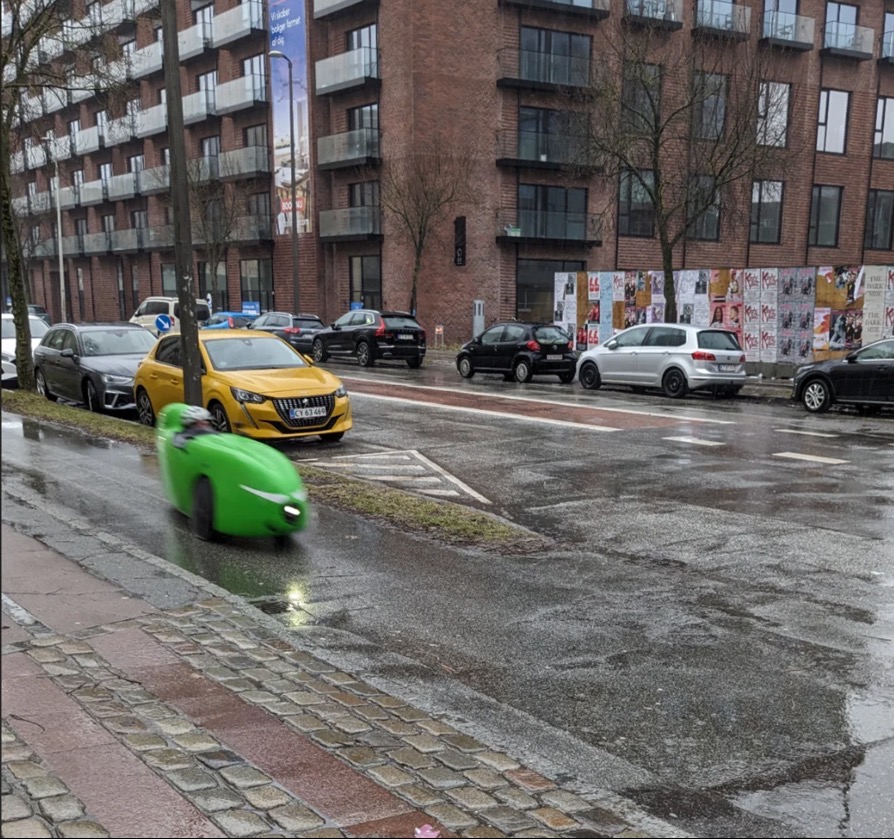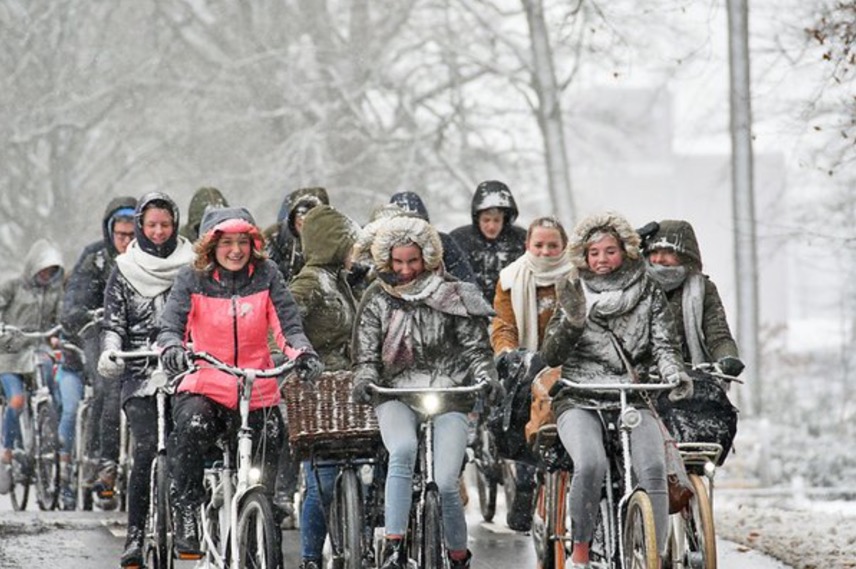Velomobile Riding, Safety, and Weather Protection
Introduction (Please Note our staff is setting Links they will be available shortly)
Velomobiles are a great way to commute, combining the benefits of a bicycle with the added protection of a weather-resistant shell. This guide is designed to help you navigate the world of Velomobile commuting, covering everything from riding techniques to safety tips and weather protection strategies.
Chapter 1: Velomobile Riding Basics
1.) Get familiar with your velomobile: Before hitting the road, take some time to understand its features and controls. Practice maneuvering in a safe environment to get comfortable with its handling.
- 1a.) Steering:The increased turning radius and quick maneuvers could cause stability issues. Some people start by treating a Velomobile like riding a regular trike. This is not the case; many maneuvers are dangerously different. For example, starting can be much slower, which can cause you to venture into a traffic crossing without having enough speed to avoid
traffic. Especially if you are not in a lower gear. Turning radius, turning on a regular trike means you can lean into a curve, creating more stability. Not so with a Velomobile. Your seating and shoulder width are contained. Leaning into a turn or curve is almost non-existent. Even though a Velomobile has a low center of gravity, the tipping issue is real. Read More
2. Start slow:When transitioning from a conventional bicycle to a velomobile, start with shorter rides to get used to the differences in handling and speed. One crucial item is stopping distance, called Newton’s Law, more widely known as forward inertia. Stopping distances are significantly impacted by the speed attained and the Velomobile’s weight. Proper selection of brakes for your riding style and terrain can be a life-saving choice. Read More
3. Use hand signals: Standard hand signals are essential for communicating intentions with other road
users, especially for bicycles. Fortunately, many manufacturers have lights as standard equipment, but
just as many others have headlights, taillights, and turn signal lights as options. Read More
4. Be aware of blind spots: Velomobiles have more prominent blind spots than traditional bicycles. The
reason is that your seat and tight position inhibit your ability to turn your head and upper body. Always
check your mirrors and over your shoulders before changing lanes or merging. Mirrors are, in many cases,
an option. So remember, when ordering a new Velomobile, don’t automatically think typical safety features are standard equipment. Want to know more before ordering? Read More
5. Stay visible: Install lights and reflective materials on your velomobile to enhance visibility, especially in low-light conditions. If your Velomobile does not have typical safety lighting or reflective materials, install these options yourself. The more reflective, the better. We have developed a suggested list for you to find out where to buy outdoor reflective tape or other accessories at a discount. Read More.
Chapter 2: Velomobile Safety Tips
1. Wear a helmet: Always wear a helmet while riding your velomobile to protect yourself in case of a tip-over or collision. I know you think you are in this well-protected Velomobile cockpit. You could be dead, right! Remember, it always happens to the other guy until it happens to you. You are in a more protected environment inside the Velomobile cockpit but also a captive. You must take the lumps and bumps or whatever else happens with a distracted driver. Being vigilant is not always enough to miss a road obstacle. An unexpected maneuver resulting in a tip-over or rollover. Or a car that ignores the stoplight and t-bones you mid-intersection. In most cases, Velomobile drivers never encounter such emergency issues. Find information on other safety precautions to reduce crashes and injuries. Read More
2. Obey Traffic Rules:To stay safe,follow road traffic laws and signals, and ride in the same direction as traffic. Expect the unexpected on paved trails. Horns on Velomobiles are a safety item that should not be overlooked. Most paved trails are not restricted to bicycles only. Pedestrians out for a walk, hikers, skateboarders, dog walkers, eBikes (if they do not exceed 25 miles per hour at top speed), and trail
systems. Check the state you may be riding or vacationing in for local laws governing bike trail usage. For example, the Katy Trail in Missouri, USA, is 247 miles covered with crushed limestone. It is pretty smooth, a little dusty in the dry season. However, it becomes your worst nightmare for a Velomobile when it rains. Cleaning, oh my, you will never ride another crushed limestone trail during or after it has recently rained,
trust me.
3. Commutingto the store or work, touring, or riding for pleasure. Riding on a paved road in traffic, have you given this much thought? Velomobiles are not those skinny little bikes you can dart in and out of traffic. Last-minute decisions usually end badly. Many Velomobile riders in traffic get their position on the roadway wrong. If a bike lane exists, that should be your first choice. Many communities in the U.S. are including bicycle safety lanes. Safety should be your number one concern if you do not have a bike lane choice. Most riders in traffic hug the side of the road. I believe the reason is that we have always ridden on the side of the road for safety,
in traffic or road congestion. Our goal is not to obstruct traffic and maintain personal safety simultaneously. I am not suggesting you try riding in congested 45-mph traffic. But you can reasonably ride in 20-30 mph
metropolitan traffic with most Velomobiles. Do not attempt to do what I suggest if you don’t feel comfortable on your first few rides. Make sure you are completely comfortable with riding and maneuvering your Velomobile.
Always Exercise good personal judgment and understand your current skill level and capabilities.
Riding in traffic is merely a tip that works for me. If, for any reason, you are uncomfortable, please do what you think is best for your own personal safety and Velomobile riding experience. Instead of hugging the shoulder, ride in the center of the lane or a bicycle lane if available and wide enough. The reason for riding in the center or left center of the lane you choose to ride in is simple. You stop cars from zipping so close that you see every scratch in their car paint as they go by in a blur. We have laws, but most people think bicycles on roadways are a nuisance and should be banned.
Fatality Facts 2021 Bicyclists
The newest information available from the Insurance Institute for Highway Safety (IIHS). Each year, about 2% of motor vehicle crash deaths are bicyclists. Although child bicyclist deaths have declined over the years, deaths among bicyclists aged 20 and older have quadrupled since 1975. In a majority of bicyclist deaths, the most severe injuries are to the head, highlighting the importance of wearing a bicycle helmet.
Now, the good news. Your Velomobilesticks out like a raccoon in a pie-eating contest. Most U.S. and Canadian citizens slow up to get a closer look at your Velomobile. You may even become alarmed when the car that slowed to have a look follows you until you stop. They usually want a better look and have questions.
One Of My OMG Moment
I stopped with my custom bike at an ice cream shop in a small town near the trail. I put my travel cover over it and went inside. I do this to stop gawkers from messing with controls. I am sure I was gone no longer than 10 minutes. When I exited the ice cream shop, I saw a police officer and about 10 concerned citizens looking at my bike. The cover was off and lying on the ground. I asked the police officer if there was a problem. The police officer wanted to know why I had not used the bike rack. (that’s what he said). My initial response was laughter. Then I blurted, “Does it look like it will fit a bike rack?” that was not helpful. Some of the onlookers laughed at my statement. The officer said, “Next to the bike rack, sir.” Then the officer told me in no uncertain terms that I was not allowed to ride a motorized vehicle on the bike path, not even a go-cart. Dah! Being a bit of a smart-ass, I replied, “That is good to know, Officer.” I finished my ice cream, big gulps at a time. I folded my cover and put it back in its spot. Then, I put on my helmet and proceeded to pedal away.
Just then, the cop says, in a loud, stern voice, “Hey, what are you doing? Where are you going?” I was a bit startled and responded, “I am going home; why?” I just told you that you cannot ride on the trail, right? Yes, without being a smart ass this time. While he stared at me, he said, “Why are you going to ride your battery-operated vehicle on the trial?” The officer continued, “I know it will exceed 25 mph.” You know I had to string him along again; “Why do you think this is battery-operated?” I saw the battery, he said. “Okay, but this is a bicycle and has no e-assist or engine. The battery is for lighting, turn signals, my horn, and navigation.” Just then, I beeped my horn just for entertainment value, mine, of course. He didn’t smile. He was a little more terse this time. He raised his voice
with a more puffed-up chest. look. “What? do you think I am stupid?” No, officer, I think you are misinformed. This is a bicycle. I can show you the pedals. He immediately said, “All eBikes have pedals”. The inquisition ended once he saw the pedals, e-assist, and no electric motor or engine. He didn’t crack a smile, “Alright, get outta here.” I think it was a big letdown for him. I smiled to myself most of the way home. I shared the events with my wife. She said, “Don’t pull these guys’ chains.”
A month later, I saw him mowing a lawn a few blocks away while in my car. He lives in my neighborhood! (I’ll stop by and introduce myself.)
Expect to get pulled over once or twice until local law enforcement knows what you are riding.
4. Stay Alert:Watch for potential hazards, such as potholes, debris, or vehicles making sudden maneuvers. Railroad tracks can be an absolute nightmare if you do not take them straight on and slowly.
Don’t expect people to hear or understand what you say when you tell them you will pass on their left. More often than not, they turn left in front of me to see who or what is coming. A few quick, short toots of the horn from a distance will usually get their attention without frightening them to death.
5. Avoid distractions:Stay focused on the road and avoid using your phone or other distractions while riding. I listen to music but use one of those bone sound transfer headsets. If you want to know more about helmets and headphones, I have some links that will be included in the FREE Pre-Ride ChecklistForm. Read More
6. Maintain your velomobile:Regularly check the brakes, tires, and other components of your Velomobile to ensure they are in good working condition. That may sound like I am treating you like a kindergartener, but
I am not. Velomobiles lure you into false security. You may not check anything for six months or longer because they are usually solidly built. They feel very secure inside while in use. What happens if you do not check your cables and your shifting cable snapped 40 miles from home in the middle of nowhere? Are you going to call AAA? (Triple A Roadside Service). I have been told that duct tape fixes everything. If it doesn’t work, you haven’t used enough duct tape. You can not plan for every emergency, but you can reduce those emergencies with a pre-ride checklist. Get your FREE Pre-Ride Checklist.
Chapter 3: Weather Protection Strategies


Dress appropriately:Wear weather-appropriate clothing, such as waterproof jackets and pants, to stay dry during rainy conditions. If you have chosen the enclosed cockpit option, you will remain dry except for the occasional drip, depending on the wind direction and type of windscreen enclosure you have installed.
1. Use Canopy Option:Consider installing the canopy option on your Velomobile to provide additional protection from rain and wind, as mentioned above. Consider this option if you plan to use a Velomobile long-distance riding, touring, or as a commuter option. The other reason to opt for the enclosed canopy is that it extends your riding season year-round. We northern folks think that is very significant. Of course, the road has to be plowed, so you will miss a few days here and there, but for the most part, riding 11 months out of the year in the snow belt is a fair trade for the cost of the roof enclosure. How to keep your windscreen from fogging up. Read More

Wished I had a Velomobile Right Now. Me too, me too.
2. Stay warm:In cold weather, layer with thermal clothing and use hand warmers or gloves to keep your hands warm. We say this, but in truth, you will usually remove your outer layer until you arrive at your destination. I have overdressed more than once. I tend to be a furnace anyway.
Extra socks can be handy if you do not have an enclosed cockpit floor. In the winter months, I use heated socks for distances further than a short commute to the store or a client within 10 miles.
3. Keep essentials handy: Pack a small emergency kit with spare tubes and folding tires, tools, and a first aid kit in case of unexpected weather conditions, mechanical issues, or injury. This is an FYI: Have an extra set of rims and tires for winter months that are a bit wider. They will work better and you don’t wear out or damage your summer tires.
5. Consider Extended Use:
In northern climates, use your Velomobile for at least 8 to 10 months each year. If the roads are plowed and de-iced, you should be fine. Icy conditions: I don’t venture out, but you may like an icy road adrenaline rush to entertain yourself. Please film your ride and send me a copy; we’ll all be delighted. Oh, and make a note to yourself, “Pay life insurance before riding on icy roads.”
Conclusion:
Using a Velomobile as a commuter can save thousands of dollars a year. Utilizing the preceding tips on this page lets you enjoy a safe and comfortable velomobile commuting experience. Remember to prioritize safety, stay aware of your surroundings, and be prepared for different weather conditions to maximize your velomobile riding enjoyment. Your Velomobile can offer great riding experiences besides work commutes that save you thousands of dollars. Take a tour with your Velomobile. Enjoy all the extra room provided inside a Velomobile.
Happy commuting!
These tips are excerpts from the ebook “The Velomobile Experience.” The book, written by the owner of this website, will SOON be available for preorder on Amazon and on our VelomobileHPV.com website.
You can purchase
the ebook –
“The Velomobile Experience”
at a special discount.
Normally $19.95 early purchase registration is $9.95 for the eBook Register For Your Copy today.
